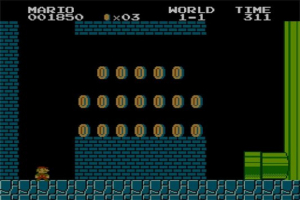Games are fun. Or to put it in this context, video games are meant to be fun. And a good game design makes sure that it stays fun throughout the entire game.
When we say good game design, we mean creativity, technical expertise, and a deep understanding of the target audience that helps to provide an enjoyable gameplay experience to the players.

As rightly said by Jane McGonigal in her book ‘Reality is Broken: Why Games Makes Us Better and How They Can Change The World, “A well-designed game should be playable immediately, with no instruction whatsoever.” And there are a few game design basic principles that help with creating a well-designed game.
With this though, let us understand the importance of game design principles.
“Game design principles are the rules, standards, and best practices the game developers follow while creating a video game to promote player engagement and ensure a smooth gameplay experience”.
Game design mainly focuses on two main factors. The first one is adding exciting features (such as graphical, and technical aspects) to the game and the other one is providing a seamless user experience. The game designer needs to make sure these two factors complement one another and not conflict with each other — in order to give an immersive gaming experience to the audience.
To make sure the players have an enjoyable gaming experience, you can implement a set of game design principles. These principles were experimented with various types of games by many game developers over the years and have proven to work.
Below, we have explained seven of those important video game design principles with examples for your better understanding.
Let’s begin.
Goals and objectives provide a pathway for the players to follow in the game. A video game has a primary goal and many small goals. The primary goal is the completion of the game while the set of small goals motivates the player and pushes them to keep moving forward to achieve the primary goal. In a way, goals create a structure for the game.

There are some types of general goals and objectives like territory, deciphering/encrypting, escaping, collecting, and building. To achieve these goals and objectives, certain rules and guidelines must be followed. These rules induce a wide range of emotions in people when they try to achieve a goal. For example, when a player is playing an FPS game, the player needs to fire, run and defend themselves. They will have certain rules they need to adhere to while playing, which creates tension and fear. When the players achieve that goal, they feel achievement and joy.
Hence, goals and objectives provide a sense of challenge and purpose for the players. By achieving them, the players get motivated to keep playing the game.
“Game mechanics is the way in which the players interact with the game and it also defines what players can and cannot do in a game”.
The game mechanics is considered the building block for the game. Keeping the gameplay mechanics simple and engaging is very important to make the gameplay interesting. There are many popular games that have only 2 to 3 core mechanics.

Let me give a better explanation with the help of an example. Let us take the Super Mario game. Jumping, running, collecting power-ups, and sliding are the core game mechanics used in the entire game. These simple core mechanics made the game more appealing and engaging, leading to its overall success among the players.
In some cases, if the game has many complicated gameplay mechanics, it might confuse the player. When playing a game, the actions performed by the players should be mindless and intuitive. If the game fails to provide that experience to its players, then there are chances that they might get frustrated and drop out of the game.
When you are playing a game you should be able to travel along with the flow of the game and have a seamless playing experience. This can be achieved by implementing an easy user interface. The controls, menus, options, and other user interface elements should aid the player in easily interacting with the game.
While playing a game, the player should be focusing on ways to defeat the enemy or plan the next move. Not on figuring out how to use the controls. This totally destroys the flow of the game, leading to a poor user experience.
Interestingly, our human cognition has a way of recognizing similar symbols or actions as the same. For example, when playing an RPG game, the player sees an arrow symbol in the game which symbolizes moving in a particular direction (turn left/right or go straight). Every time the player sees an arrow symbol in the game, the brain automatically thinks that it represents direction. So, whenever you design a game make sure you use commonly used color themes, symbols, and phrases to represent a specific action or a thing. This might make the game more engaging for the players.
And also, keep in mind to make controls and other user interface elements easily accessible to the users. For instance, a player is playing your game on a PC while another player is playing the game on a mobile or tablet. You need to make sure the game is optimized for both players. This will help with uninterrupted gameplay and better gaming experience.
A mobile game development company makes an exciting mobile game with many great many features, exciting levels, unique game art, immersive visual effects, etc., But if it is impossible to achieve the goals, Will the game be successful? Probably not. Because it might be overwhelming for the players and they might disengage from the game.

“Pro gamers can make five hundred or six hundred actions per minute,” says Philip Hübner, a product manager for the e-sports company Intel Extreme Masters, “which is ten actions per second”. For beginners though it might be a daunting affair. Because humans can only function within their physical capabilities. If the game requires superhuman abilities, then the players will feel frustrated and drop out of the game.
We are not saying, the game should be easy. It might bore the players. The game needs a certain level of difficulty to challenge and motivate the players.
Another aspect of a well-designed game is that the next-next actions to be performed should be obvious to the players. For example, in a strategy game, the player sees a treasure box with a keyhole. They would understand that their next obvious action is to find a key to open the treasure.
So, when you design a game, make sure the game is easily understandable and at the same time has a certain level of difficulty. This will balance out the gameplay experience for the players.
Rewards and feedbacks are great for engaging the audience with the game. Feedback and rewards should match the theme, style, and tone of the game.
In games, feedbacks are the game’s way of responding to the users pertaining to their actions. The feedback can be visual, auditory, or text. It should be timely, responsive, and engaging at the same time.
On the other hand, rewards fire the player’s competitive spirit making them stick with the game. Rewards are not necessary to play a game but they serve the important purpose of motivating the players and engaging them with the game.
The feedback and rewards should not be too much or too less. They need to be just adequate to avoid the players from feeling overwhelmed or losing interest in the game.
Playtesting is an important process of video game design principles. One of the basic reasons a game is tested is to check if the game is fun to play at every level.
Game testing is done in various stages of game production. Once the game design is done, the initial playtesting is conducted to check if the game concept is fun to play. If the result is not as intended, it is resolved quickly at the initial stage.
Apart from that, playtesting is done multiple times during and after game production to ensure the game is enjoyable and fun.
There is no one rule that can be used to measure the fun element in a game. You put humans to playtest the game, collect feedback and do the required changes. Ultimately, the goal of playtesting is to check if the game is fun, engaging, and enjoyable for the players.
Technically sound design does not exactly come under game design. But we included it because it is one of the important components of a video game.
For instance, you are playing a video game using a headphone. Now remove the headphone and try playing the game. You can feel the life of the game is missing. Sound and music in video games make the gameplay more realistic and effective. For example, take a horror game, the eerie music and mysterious sounds create feelings of fear and anxiety providing an immersive gameplay experience.
Sound effects also serve other purposes like providing feedback, alerting, audio cues, storytelling, and many more. Imagine a scenario, where a player hears mysterious sounds in a game, they might be alerted that there might be some danger ahead.
Likewise, using too much music might disrupt the player experience. It might be used sensibly where it is needed and where the sound designer feels it will be impactful.
To conclude, game design principles are the foundation upon which unique and immersive games are built. By understanding the player’s psychology, balancing challenges, maintaining game flow and reward, game designers can craft interactive worlds that captivate and inspire the players. The above-mentioned seven video game design principles are common for many popular and successful games. By implementing these principles in your game, you can create a successful and captivating gaming experience.
If you are looking to hire a game development company, contact Juego Studios and make an inquiry.
Juego Studios is a game art outsourcing studio, with expertise in creating games in various genres including strategy games, combat games, fighting games, puzzle games, and MMORPG games. We make games for multiple platforms such as Console, PC, Android, and iOS.
Apart from that we specialize in providing various games development services such as full-game development, game porting, co-development, cross-platform game development, and many other such services using innovative and cutting-edge technology.
1) Why Are Game Design Principles Important?
Game design principles are important because they serve as guidelines to create well-structured, immersive, and enjoyable games. By following these principles, game developers can enhance player experiences, maintain balance and fairness, and effectively communicate their vision.
2) What is a Game Design Principle?
Game design principles are the rules, standards, and best practices the game developers follow while creating a video game to promote player engagement and ensure a smooth gameplay experience
3) What purpose do rewards serve in a video game?
Rewards are a way to engage players with the game, motivate them and provide a better gameplay experience to the players.